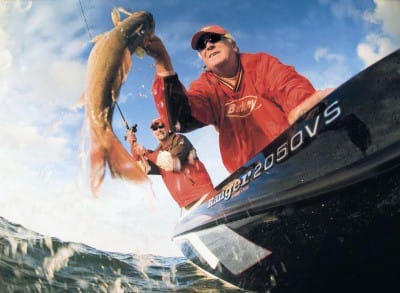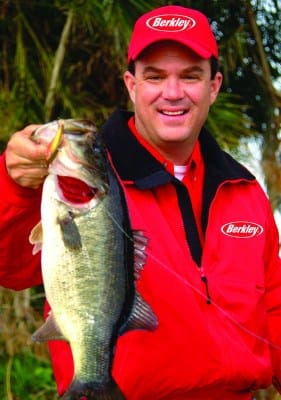 Fishing in deep water is still probably the most misunderstood type of fishing that bass anglers have to deal with on a regular basis. Deep water can be productive almost any time of year that the bass aren’t on the beds, but during the winter is when it can be especially effective.
Fishing in deep water is still probably the most misunderstood type of fishing that bass anglers have to deal with on a regular basis. Deep water can be productive almost any time of year that the bass aren’t on the beds, but during the winter is when it can be especially effective.
One of the reasons many anglers struggle with fishing deep water is because we’re all so accustomed to fishing around and casting to visible cover. This makes fishing around non-visual targets difficult for the average angler. “Deep,” of course, can be in the eye of the beholder. But to me, anything deeper than 10 feet can be considered deep. Most times (and only in certain fisheries during specific times of the year) I won’t explore anything more than 50 or 60 feet, though bass can be caught at greater depths in some fisheries. When searching for places to focus your fishing efforts in deep water, remember the difference between cover and structure. Cover is some physical object separate from the actual bottom contour. Structure is the actual bottom contour (breaks, drops, humps). These structure elements serve as a kind of thoroughfare for the bass to travel from one place or another in search of food and optimum water conditions. The presence of cover on some form of structure is what you should be looking for.
Most of the short-cuts to finding deep-water structure occur long before you get to body of water. Start with a contoured lake map and identify all of the depth changes and bottom features, marking them with different colored pens or markers. Once these areas are identified, you can begin finding bass by understanding that their entire life cycle revolves around two core areas: their spawning areas (flats) and their wintering areas (deep-water vertical break areas). The structure breaks that connect these two areas are their migration highways. For the most part, the bass winter in the deepest water/vertical break areas available, usually in the main lake.
When I arrive to the lake and get into the areas that I want to fish, I will fast idle the area in a zig-zag pattern, keeping a constant eye on my electronics. I will look for any irregularity of signs of activity such as cover on the bottom (brushpiles, weeds) or pods of bait that appear as black clouds. I keep zig-zagging up and down the potential area until I find something that I like. When I do, I will throw a marker buoy on the area and continue to circle it to establish my boundaries. If I see something else or find a definite end to something I will drop a second buoy.

Using a search-type of bait , like a Berkley Frenzy crankbait, a Berkley Power Bait Power Lizard on a Carolina rig or a big Berkley Classic jig, I begin to fan cast the entire area. I am trying to establish contact with the bottom or with cover or near bait. It’s important that as you catch fish, you keep mental or written notes of the area you are in. Take note of the water depth at which you are fishing, water temperature, water clarity, wind – anything that might help you in the future. Also look around and take visual note of landmarks so that you can more easily find your newly discovered honey hole the next time you hit the water.
There are also some general guidelines for fishing deep-water structure. During periods of active feeding, such as low light, rain or wind, the fish generally move shallower and hold looser to cover. During periods of high pressure or under adverse conditions, the bass tend to be a little deeper and tighter to cover. Structure with hard type cover on it is better in the spring and late fall (shell/rock); structure with soft type cover and areas where debris has been deposited by the current are better in the summer. Structure areas with more vertical breaks are better during the winter periods. Generally, the same sweet spots on structure tend to produce over and over each year.
One of the best ways to get and keep a bait in front of fish relating closely to structure in winter is with a drop shot. This finesse presentation is especially suited to clear water and heavily pressured areas. Using 6- or 8-pound Trilene 100% Fluorocarbon line, an Abu Garcia Soron spinning reel and 7-foot-6-inch medium-action Fenwick Techna AV rod, I will rig a small, wide-gap hook using a traditional drop shot set up. With a tungsten weight anywhere from 6 inches to 2 feet below the hook, I will either nose hook (in open water) or bury the hook, Texas-rig style (in and around heavier cover), a Berkley Gulp! bait. These baits disperse scent so powerfully in the water, it helps me catch bass even when I don’t put the bait right in front of the fish. By shaking the rod tip, I am able to give the bait a lifelike appearance without moving it out of the strike zone.
Winter can be a great time to catch fish. With cold temperatures, most anglers and boaters are content to stay off the water, leaving most of the best spots with little fishing pressure. With a little homework and the right gear, you can be catching the big ones while everyone else is sitting at home.



